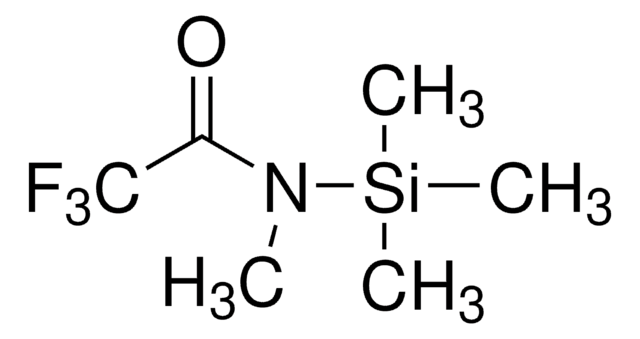A1720
G 418 disulfate salt
powder, non-animal origin, suitable for cell culture, BioReagent
Synonym(s):
Antibiotic G418
About This Item
Recommended Products
Product Name
G 418 disulfate salt, powder, BioReagent, suitable for cell culture
product line
BioReagent
Quality Level
form
powder
optical activity
[α]/D (Specific Rotation: +104.4o (c=0.3% in H2O at 26oC))
potency
≥720 μg per mg (Dried basis)
mol wt
692.7
packaging
pkg of 1 g
pkg of 25 g
pkg of 5 g
technique(s)
cell culture | mammalian: suitable
color
white to off-white
solubility
H2O: 100 mg/mL (As a stock solution. Stock solutions should be stored at 2-8°C. Stable at 37°C for 8 days.)
antibiotic activity spectrum
Gram-negative bacteria
Mode of action
protein synthesis | interferes
storage temp.
2-8°C
SMILES string
OS(O)(=O)=O.OS(O)(=O)=O.CN[C@H]1[C@H](O)[C@@H](OC[C@@]1(C)O)O[C@H]2[C@H](N)C[C@H](N)[C@@H](O[C@H]3O[C@H]([C@H](C)O)[C@@H](O)[C@H](O)[C@H]3N)[C@@H]2O
InChI
1S/C20H40N4O10.2H2O4S/c1-6(25)14-11(27)10(26)9(23)18(32-14)33-15-7(21)4-8(22)16(12(15)28)34-19-13(29)17(24-3)20(2,30)5-31-19;2*1-5(2,3)4/h6-19,24-30H,4-5,21-23H2,1-3H3;2*(H2,1,2,3,4)/t6?,7-,8+,9+,10+,11-,12-,13-,14+,15+,16-,17-,18+,19-,20+;;/m0../s1
InChI key
UHEPSJJJMTWUCP-NKCAIAFTSA-N
Looking for similar products? Visit Product Comparison Guide
General description
Application
Biochem/physiol Actions
Caution
Preparation Note
Other Notes
Signal Word
Danger
Hazard Statements
Precautionary Statements
Hazard Classifications
Resp. Sens. 1 - Skin Sens. 1
Storage Class Code
11 - Combustible Solids
WGK
WGK 3
Personal Protective Equipment
Choose from one of the most recent versions:
Already Own This Product?
Find documentation for the products that you have recently purchased in the Document Library.
Articles
Antibiotic kill curve is a dose response experiment in which mammalian cells are subjected to increasing amounts of selection antibiotic
Protocols
Stem Cell protocols for cryopreservation, thawing of cryopreserved stem cells and media preparation.
Our team of scientists has experience in all areas of research including Life Science, Material Science, Chemical Synthesis, Chromatography, Analytical and many others.
Contact Technical Service






